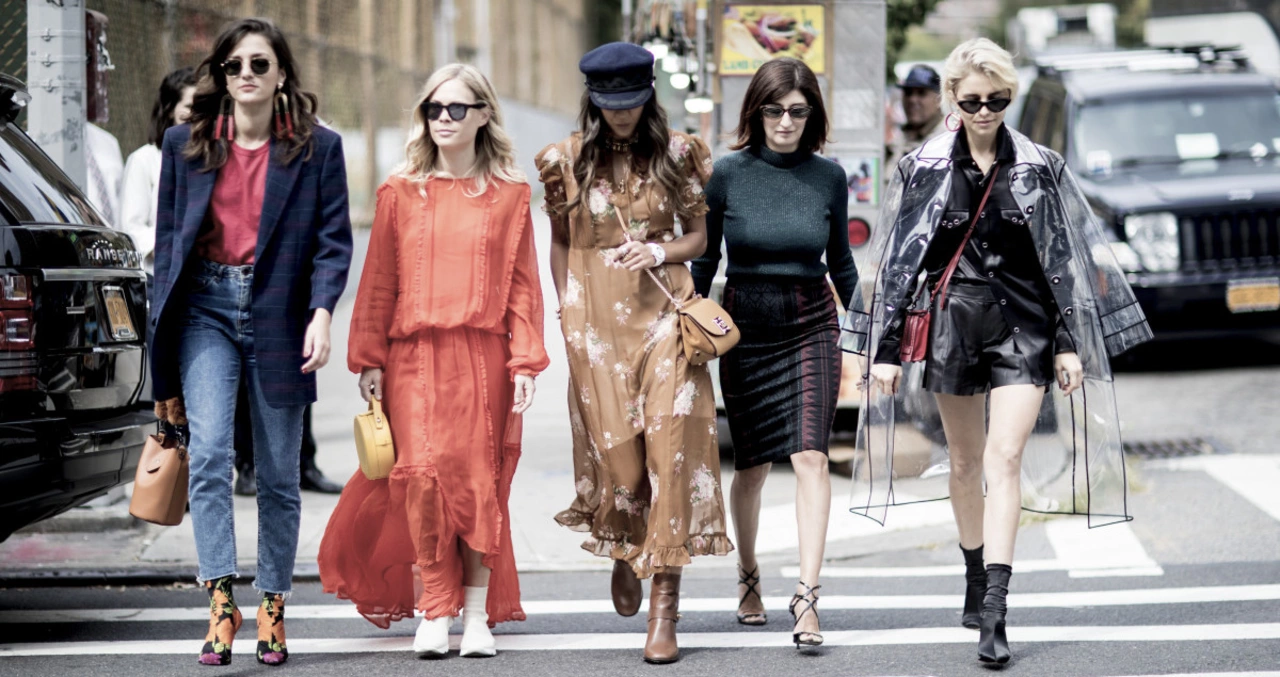What is fashion and style?
 May, 11 2023
May, 11 2023
Introduction to Fashion and Style
What is fashion and style? These two words are often used interchangeably, but they have different meanings. In this article, we will explore what fashion and style mean, and how they influence our daily lives. We will also discuss the various elements of fashion and style that contribute to one's personal look, and how to incorporate them into your wardrobe to create a unique and expressive style statement.
The Difference Between Fashion and Style
Fashion refers to the current trends in clothing, accessories, hairstyles, and makeup that are popular at a given time. It is an ever-changing phenomenon, influenced by various factors such as culture, society, and individual preferences. On the other hand, style is the way in which one expresses themselves through their clothing, accessories, and overall appearance. It is a more personal and individualistic concept, allowing one to showcase their personality and preferences.
Elements of Style
There are several key elements that contribute to one's personal style. These include color, pattern, texture, and silhouette. By understanding and incorporating these elements into your wardrobe, you can create a unique and cohesive style that reflects your personality and taste. Experimenting with different combinations of these elements will help you develop a style that is uniquely yours.
Color
Color is one of the most powerful tools in creating a personal style. It can evoke emotions, create visual interest, and even influence one's mood. When choosing colors for your wardrobe, consider your skin tone, hair color, and eye color, as well as your personal preferences. Don't be afraid to experiment with bold and vibrant hues, or to mix and match colors in unexpected ways.
Pattern
Patterns can add visual interest and personality to your wardrobe. There are countless patterns to choose from, including florals, stripes, plaids, and geometric designs. When incorporating patterns into your style, consider the scale of the pattern, as well as how it complements your body shape and size. Mixing and matching patterns can also create a unique and eye-catching look, but be sure to keep the overall look cohesive by choosing patterns with similar colors or themes.
Texture
Texture refers to the feel and appearance of a fabric or material. It can add depth and dimension to your outfits, as well as create visual interest. Some examples of textures include smooth silk, rough linen, soft cashmere, and structured leather. Experimenting with different textures in your wardrobe can elevate your style and make your outfits more dynamic and interesting.
Silhouette
The silhouette of a garment refers to its overall shape and the way it fits the body. Understanding your body shape and what silhouettes flatter you is essential in developing a personal style. Choose clothing that accentuates your best features and minimizes any areas you may be self-conscious about. Don't be afraid to experiment with different silhouettes and styles, as this can help you discover new and flattering looks.
Fashion Trends and Personal Style
While fashion trends can be a source of inspiration, it's important not to blindly follow them. Instead, use them as a tool to enhance and develop your personal style. Pick and choose the trends that resonate with you and incorporate them into your wardrobe in a way that feels authentic and true to your style. Remember, personal style is about self-expression and individuality, so don't be afraid to put your own spin on current trends.
Developing Your Personal Style
Developing a personal style is a journey that takes time, experimentation, and self-discovery. Here are some tips to help you on your path to creating a unique and expressive style:
- Assess your current wardrobe: Take a look at the clothes you already own and identify the pieces that make you feel confident and comfortable. This will give you a starting point for building your personal style.
- Find inspiration: Look to fashion magazines, blogs, and social media for inspiration. Create a mood board or Pinterest board of looks and styles that resonate with you.
- Experiment: Don't be afraid to try new things and step out of your comfort zone. The only way to truly discover your personal style is through trial and error.
- Be true to yourself: Always choose clothing and accessories that make you feel good and reflect your personality. Your personal style should be a genuine expression of who you are.
Conclusion
Understanding the concepts of fashion and style can help you develop a unique and expressive personal style that showcases your personality and preferences. By incorporating elements such as color, pattern, texture, and silhouette, and staying true to yourself, you can create a wardrobe that makes you feel confident and comfortable. Remember, fashion is meant to be fun and creative, so don't be afraid to experiment and make your style your own.